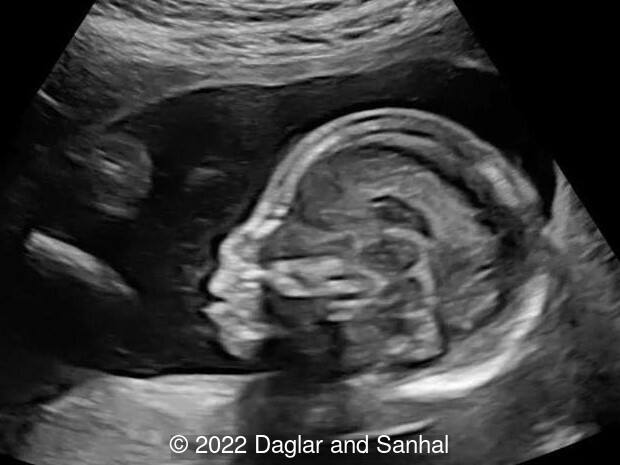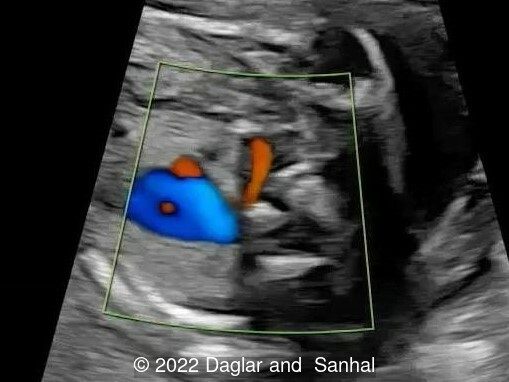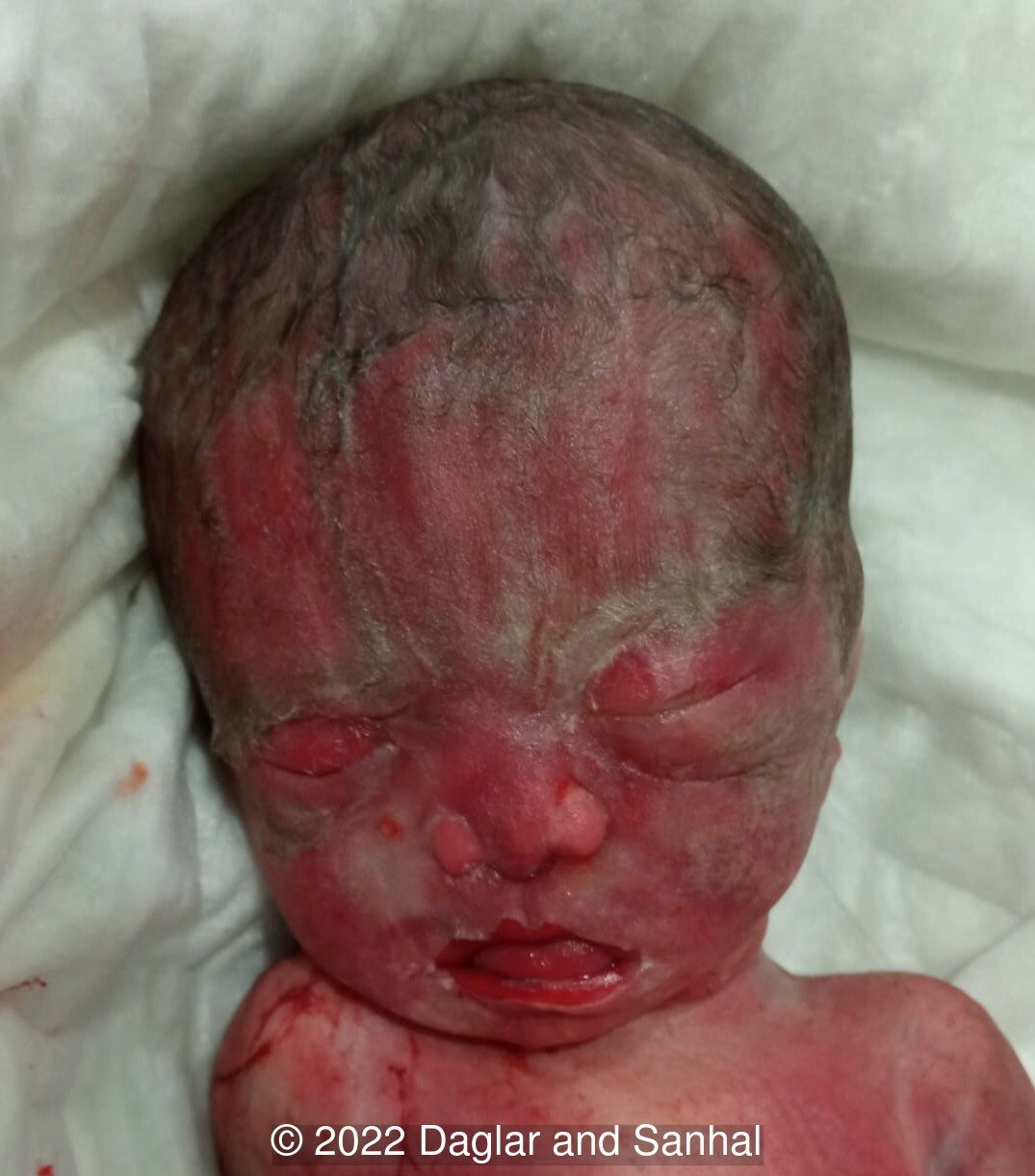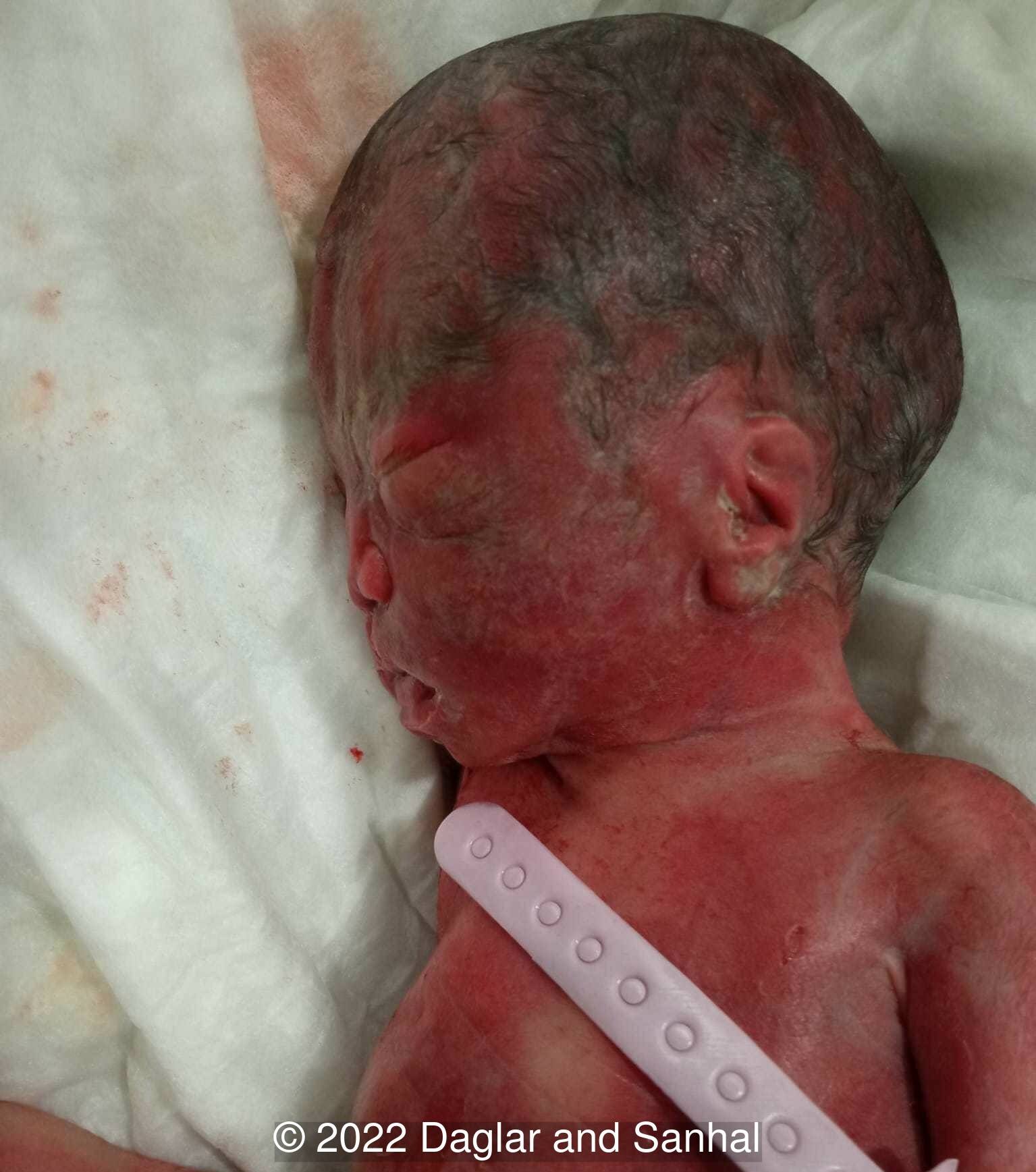Case of the Week #571
(1) Mersin Private Clinic; (2) Akdeniz University Department of Perinatology
Case Report: A 35-year-old primigravida with no contributory family or past medical history presented to our clinic at 20 weeks gestation for the routine second trimester anomaly scan. All biometric measurements were normal except a shortened femur length consistent with 18 weeks gestation. The ultrasound scan revealed the following findings.


View the Answer Hide the Answer
Answer
We present a case of Koolen De Vries Syndrome (OMIM #3610443) (deletion 17q21.31), which was found with microarray analysis. After counselling, the couple chose to terminate the pregnancy.
Image 1 and Video 1: Short - dysplastic corpus callosum with abnormal fetal profile (Binder phenotype like).
Image 2 and Video 2: Aberrant right subclavian artery.


Discussion
Koolen-de Vries syndrome (MIM#610443) is a rare microdeletion syndrome involving the 17q21.31 region, which was first described by Koolen and de Vries in 2006. Its incidence has been estimated at 1:16,000 in the general population [1]. This syndrome is characterised by developmental delay, intellectual disability, hypotonia, epilepsy, characteristic facial features, and congenital malformations in multiple organ systems [2].
Fetuses with Koolen-de Vries syndrome may present with the following:
- Intrauterine growth retardation (26%)
- Central nervous system defects (53%) including corpus callosum hypoplasia/aplasia, enlarged ventricles, hydrocephalus, and heterotopias
- Facial dysmorphism (80%)
- Cardiac abnormalities (39%) including atrial septal defect, ventricular septal defect, hypoplastic aortic valve, bicuspid aortic valve, common left pulmonary vein, dysplastic pulmonary valve, dilated left ventricle, or anomalous right subclavian artery
- Urogenital anomalies (45%) [3]
Developmental delay, behavioral problems and intellectual disability cause postnatal disability. It was reported that all individuals with Koolen-de Vries syndrome have developmental delay and intellectual disability. The level of intellectual disability was mild in 42%, moderate in 37% and severe in 22% [3].
References
[1] Koolen DA, Kramer JM, Kornelia Neveling K,et al. Mutations in the chromatin modifier gene KANSL1 cause the 17q21.31 microdeletion syndrome. Nat Genet. 2012 Apr 29;44(6):639-41.
[2] Shaw-Smith C, Pittman AM, Willatt L et al. Microdeletion encompassing MAPT at chromosome 17q21.3 is associated with developmental delay and learning disability. Nat Genet 2006; 38: 1032–1037.
[3] Koolen DA, Pfundt R, Linda K, et al. The Koolen-de Vries syndrome: a phenotypic comparison of patients with a 17q21.31 microdeletion versus a KANSL1 sequence variant. Eur J Hum Genet. 2016 May;24(5):652-9.